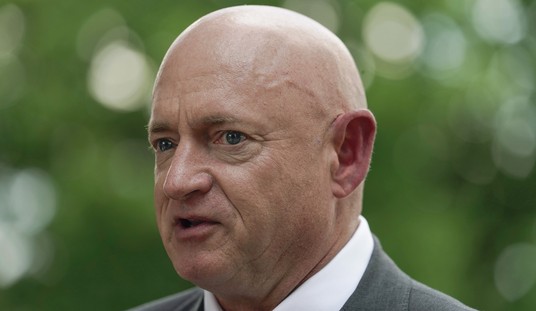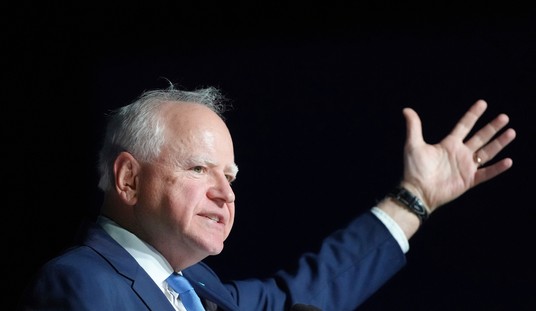WASHINGTON — The Treasury Department levied sanctions Wednesday on three members of al-Qaeda — all sheltering in Iran.
The Specially Designated Global Terrorists label means Americans are prohibited from conducting transactions with the men, and any property tied to them and under the reach of U.S. jurisdiction falls under the sanctions.
“Today’s action sanctions senior al-Qaeda operatives responsible for moving money and weapons across the Middle East,” Adam J. Szubin, Acting Under Secretary for Terrorism and Financial Intelligence, said in a statement. “Treasury remains committed to targeting al-Qaeda’s terrorist activity and denying al-Qaeda and its critical support networks access to the international financial system.”
The Treasury announcement called Faisal Jassim Mohammed Al-Amri Al-Khalidi “part of a new generation of al-Qaeda operatives” who “participated in an annual al-Qaeda Council meeting with other al-Qaeda commanders to discuss weapons acquisition” in May 2015.
Al-Khalidi, a Kuwait-born Saudi who turns 32 years old this week, is identified as a battalion commander who, since 2011, has served as a liaison between al-Qaeda and the Pakistani Taliban.
Yisra Muhammad Ibrahim Bayumi, a 48-year-old Egyptian, is described as “a veteran al-Qaeda member who has been located in Iran since 2014 and a member of al-Qaeda since at least 2006.”
“As of mid-2015, Bayumi was reportedly involved in freeing al-Qaeda members in Iran,” the Treasury announcement continued. “As of early 2015, he served as a mediator with Iranian authorities. Prior to that, Bayumi was involved in assisting al-Qaida members located in Iran.” Iran says it imprisons al-Qaeda, but analysts have noted that higher-level operatives remain free while lower-level operatives have been detained at times to appease international critics.
Bayumi has also been a money guy, including “securing funds from Syria for al-Qaeda members and facilitating al-Qaeda funds transfers.”
And Abu Bakr Muhammad Muhammad Ghumayn, a “senior al-Qaeda leader who has served in several financial, communications, and logistical roles for the group,” took over “financing and organization of al-Qaeda members located in Iran” last year.
An intelligence and security operative, Ghumayn was a “conduit” to senior al-Qaeda leadership in Waziristan in 2014 before leaving for Iran. He’s 35 years old and Algerian with a French passport.
Just six days before the announcement, Treasury Secretary Jack Lew hailed the one-year anniversary of the nuclear deal with Iran as “a landmark international achievement, removing the threat of a nuclear-armed Iran while illustrating the power of economic sanctions, coupled with tough diplomacy, to bring about a safer world.”
“We are meeting our commitments under the deal, by lifting nuclear-related sanctions as specified in the [Joint Comprehensive Plan of Action] and by providing clear and timely guidance to government and private sector partners about engagement with Iran that is now permitted,” Lew said, adding that Iran “has benefited economically” already by “significantly increasing its oil sales, opening more than 300 new bank accounts with foreign banks, negotiating billions of dollars of new lines of credit, and seeing new planned foreign direct investment increase by more than $3 billion.”
“We remain clear-eyed that the JCPOA did not resolve, nor was intended to resolve, concerns outside of the nuclear arena, including Iran’s support for terrorism and its ballistic missile program, and we will continue to leverage our various tools – including sanctions – to counter this behavior.”
This week, the Associated Press reported on a confidential document submitted by Iran to the International Atomic Energy Agency stating that the Islamic Republic intends to dial up their nuclear program with uranium enrichment and install advanced centrifuges beginning in 2027.
Foreign Minister Javad Zarif argued that it’s a “matter of pride” for Iran.
During the entire time of nuclear negotiations, it was known that Iran harbors al-Qaeda. The 9/11 Commission Report detailed the longstanding, cozy relationship between the Islamic Republic and al-Qaeda. Nearly two years ago, the Obama administration raised the alarm about an “immediate threat” from a unit of terrorists in Syria called the Khorasan Group — led by Muhsin al-Fadhli, commander of al-Qaeda in Iran before leaving to establish operations in the war-torn country.
In designating al-Fadhli a terrorist in October 2012, the Treasury Department said he “began working with al Qaeda’s Iran-based facilitation network in 2009 and was later arrested by the Iranians,” but was then “released by the Iranians in 2011 and went on to assume the leadership of the facilitation network.”
In 2011, the Treasury Department designated six members of al-Qaeda in Iran “operating under an agreement between al-Qaeda and the Iranian government.”
“This network serves as the core pipeline through which al-Qaeda moves money, facilitators and operatives from across the Middle East to South Asia,” Treasury said at the time.
Three years after that announcement, al-Qaeda announced the creation of al-Qaeda in the Indian Subcontinent, which united various militant groups across South Asia. Their crimes have included a string of assassinations by machete in Bangladesh against secularists, intellectuals, writers and others deemed anti-Islam. An Atlanta man and a USAID worker have been among AQIS’ victims.
The State Department Country Reports on Terrorism for 2015 briefly mentioned al-Qaeda at the very end of Iran’s listing in the state sponsors of terror, which focused on Tehran’s relationship with Hezbollah and Hamas.
“Iran remained unwilling to bring to justice senior al-Qa’ida (AQ) members it continued to detain and refused to publicly identify the members in its custody,” the report said. “Iran previously allowed AQ facilitators to operate a core facilitation pipeline through Iran since at least 2009, enabling AQ to move funds and fighters to South Asia and Syria.”
Attacks planned by al-Qaeda in Iran include the 2003 Riyadh housing compound bombing, in which eight Americans were among the 35 killed.
After the 2008 attack on the U.S. Embassy in Sana’a, Yemen, which killed six civilians and six police officers, Ayman al-Zawahiri, now the leader of al-Qaeda, sent a thank-you note to the Islamic Revolutionary Guard Corps.
The intercepted correspondence praised Iran’s “monetary and infrastructure assistance” to al-Qaeda and gushed thanks for Iran’s “vision” that helped al-Qaeda in the Arabian Peninsula grow in Yemen.









Join the conversation as a VIP Member